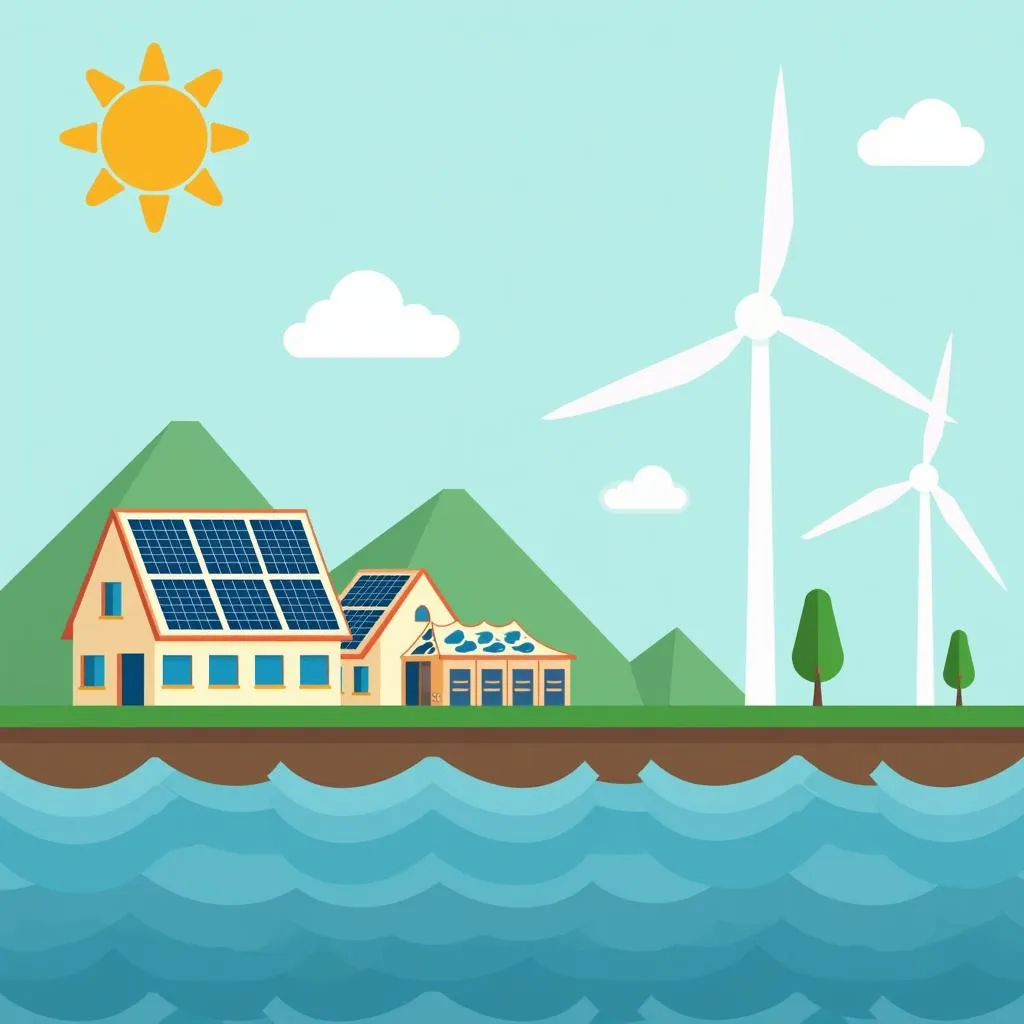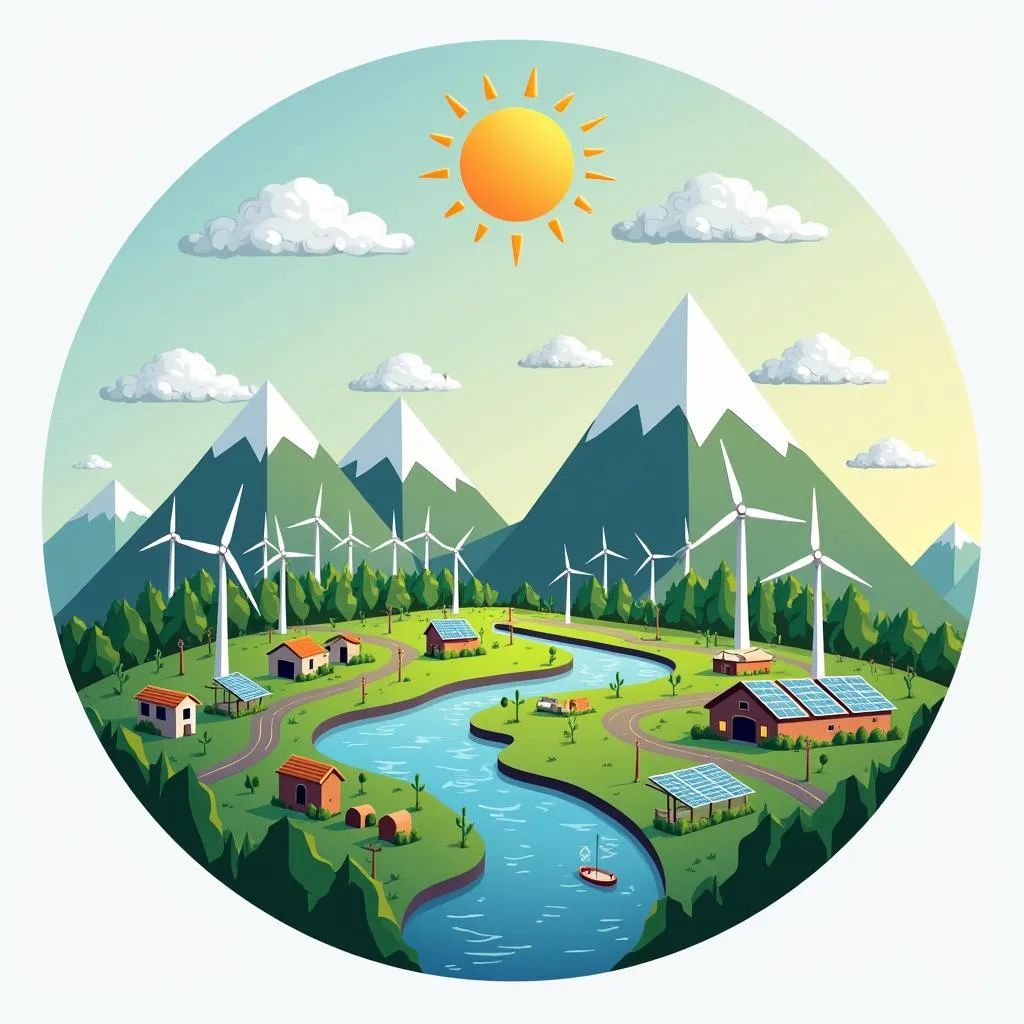In the PTE Academic exam, Summarize Written Text is a challenging task in the Speaking & Writing section, requiring a strong ability to synthesize information from a reading passage into a single sentence. One common and increasingly popular topic in this section is Renewable Energy Storage Technology Development. This is an essential subject, given the growing importance of renewable energy in industries, urban development, and transportation. In today’s article, we’ll help you prepare for this part of your PTE exam by exploring a practical example with several band-level answers.
Example Task: Summarize Written Text
Task Prompt:
In recent years, advancements in renewable energy storage technology have played a pivotal role in transforming how we manage energy generation and consumption. These technologies, which primarily focus on batteries, hydrogen storage, and other long-lasting solutions, are enabling more efficient storage and redistribution of renewable energy sources like solar and wind power. The development of these storage mechanisms is critical for overcoming the limitations posed by the intermittency of renewable energy, helping to achieve grid stability and independence from traditional fossil fuels. Furthermore, innovations in software-driven energy management are optimizing the energy flow, ensuring that stored energy is used efficiently. These contributions not only aid in reducing carbon emissions but also propel the progress toward a fully sustainable energy system.
Summarize the text in one sentence.
Sample Answers for Different Band Levels:
Band 90+ Response:
Recent advancements in renewable energy storage technologies, such as batteries and hydrogen storage, are significantly contributing to energy management optimization and grid stability by ensuring efficient use of intermittent renewable sources, reducing reliance on fossil fuels and driving sustainability.
Analysis (Band 90+):
- Content: Captures all critical points, including energy storage advancements (batteries, hydrogen), solving the intermittency issue, promoting sustainability, and grid stability.
- Form: One sentence, 54 words.
- Grammar: Advanced structures used effectively, with strong grammar and punctuation.
- Vocabulary: Sophisticated word choices such as “intermittency,” “propelling,” and “optimization.”
- Spelling: No errors.
 Advanced renewable energy storage innovations including hydrogen and battery technology
Advanced renewable energy storage innovations including hydrogen and battery technology
Band 80-89 Response:
Innovations in renewable energy storage such as batteries and hydrogen are enabling efficient use and redistribution of energy from solar and wind power, addressing issues of intermittency while reducing carbon emissions and fossil fuel reliance.
Analysis (Band 80-89):
- Content: Captures most key points, though does not mention energy management software.
- Form: One sentence, 41 words.
- Grammar: Correct grammar, but sentence structure is less complex than the 90+ band.
- Vocabulary: Good usage of precise terms like “intermittency” and “carbon emissions”.
- Spelling: No problems detected.
Band 70-79 Response:
New renewable energy storage technologies help store solar and wind power to reduce carbon emissions and support energy distribution more efficiently.
Analysis (Band 70-79):
- Content: Misses several important details, such as hydrogen storage, fossil fuel reduction, and energy management optimization.
- Form: One sentence, only 23 words.
- Grammar: Simple yet correct sentence structure.
- Vocabulary: Basic, lacking more specialized terminology like “intermittency” or “redistribution”.
- Spelling: No errors.
 Renewable energy technologies storing solar and wind while addressing carbon emission reduction
Renewable energy technologies storing solar and wind while addressing carbon emission reduction
Band 60-69 Response:
Renewable energy storage technology helps store energy more effectively and supports clean energy use.
Analysis (Band 60-69):
- Content: Lacks crucial details, providing a very general idea without mentioning specific technologies or benefits.
- Form: One sentence, 14 words.
- Grammar: Simple structure, correct but overly basic.
- Vocabulary: Uses very simple words and lacks important conceptual terms.
- Spelling: Correct, no issues.
Vocabulary and Grammar Review
This section examines key vocabulary and grammatical structures found within our text on Renewable Energy Storage Technology Development.
-
Intermittency /ˌɪntərˈmɪtənsi/ (noun): The quality that describes the irregular and non-continuous flow of renewable energy sources, such as wind or solar power.
Example: The intermittency of wind energy makes storage technology even more crucial. -
Optimization /ˌɒptɪmɪˈzeɪʃən/ (noun): The act of making the most efficient or effective use of a situation or resource.
Example: The optimization of energy flow ensures minimal waste in power distribution. -
Grid /ɡrɪd/ (noun): A network of power lines and other infrastructure for delivering electricity over large areas.
Example: Advanced storage systems help maintain the stability of the energy grid. -
Propel /prəˈpʰɛl/ (verb): To drive or push something forward.
Example: Innovations in storage technology are propelling the renewable sector toward sustainability. -
Sustainability /səˌsteɪnəˈbɪləti/ (noun): The ability to maintain or uphold a certain process or state indefinitely.
Example: Increased renewable energy use ensures the sustainability of electricity supply. -
Redistribution /ˌriːdɪstrɪˈbjuːʃən/ (noun): The reallocation of resources, energy, or wealth across different areas or sectors.
Example: Energy storage allows efficient redistribution of surplus solar energy.
 Optimized energy grid including distribution network for renewable resources
Optimized energy grid including distribution network for renewable resources
-
Hydrogen storage /ˈhaɪdrədʒən ˈstɔːrɪdʒ/ (noun): The technology of storing hydrogen gas as an energy source.
Example: Hydrogen storage is becoming a reliable method for renewable energy reserves. -
Fossil fuels /ˈfɒsəl fjʊəlz/ (noun): Natural fuels such as coal or gas formed from the remains of ancient organisms.
Example: Renewable storage technologies reduce our reliance on fossil fuels. -
Emissions /ɪˈmɪʃənz/ (noun): The release of substances, especially gases, such as carbon dioxide from vehicles or factory processes.
Example: Storing renewable sources aids in cutting down harmful emissions. -
Software-driven /ˈsɒf(t)wɛər-drɪvən/ (adj): Controlled or managed by software, often involving algorithms and data analysis for optimal performance.
Example: Software-driven energy management systems enhance the efficiency of power grids.
Conclusion
The Summarize Written Text section in the PTE exam requires careful attention to the passage’s key points, and Renewable Energy Storage Technology Development is a recurrent topic due to its modern relevance. Practicing similar tasks will not only strengthen your ability to recognize critical information but also assist in mastering academic vocabulary and grammatical precision—factors crucial for achieving high marks. Don’t forget to explore additional related topics such as Renewable energy innovation in transportation and Renewable energy storage advancements to broaden your knowledge base.
Feel free to leave a comment below after trying out this example, and let us know which part of Summarize Written Text you’d like help with next!